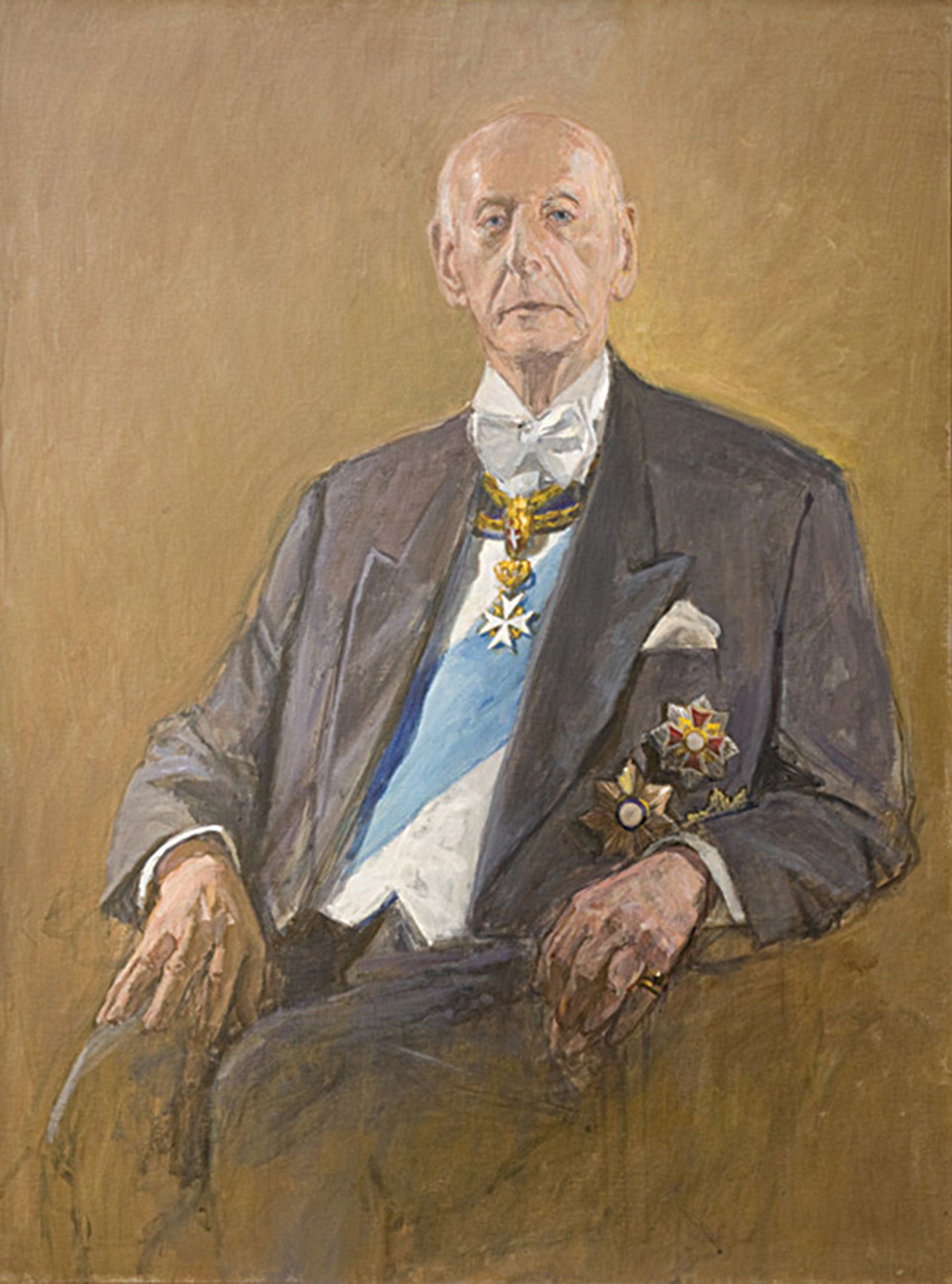For the best part of four decades, Andrew Ciechanowiecki, who died on 2 November, aged 90, was a uniquely influential figure in the London art world. As the director of Mallett at Bourdon House from 1961, of the Heim Gallery from 1965 and of the Old Masters Gallery across the road in Jermyn Street from 1986, he astonished—and terrified—colleagues with his wide-ranging expertise and irrepressible activity.
Born in Warsaw in 1924, the son of a diplomat who died when he was only six years old, Ciechanowiecki was brought up by his beautiful yet formidable mother, to whom he remained in thrall. His education was interrupted by the outbreak of war and completed in the schools run by the Polish underground. An ardent patriot, he took part in the Warsaw Uprising of 1944 and joined the diplomatic service after the Second World War (he was fluent in more than half a dozen languages). But his past in the underground army marked him in the eyes of the country’s communist rulers and he had to quit. He enrolled at Krakow’s Jagiellonian University, obtaining an MA in the history of art in 1950, but the Stalinist purges spared no one, and he was arrested later that year.
Under Stalin and after Accused of spying for Britain, the US and the Vatican, he underwent nearly 18 months of interrogation and torture, and was given a ten-year sentence. The innate flair for an opportunity, talent for dissimulation and powers of persuasion that were to make him such a formidable dealer proved useful in captivity: he managed to secure a post in the prison hospital, which enabled him to help fellow inmates get out early.
Released in 1956 by the “thaw” that followed Stalin’s death, Ciechanowiecki went back to the world of art history and curatorial posts at Wawel Castle and at the Castle Museum in Lancut. In 1958, he travelled to the US and Britain on grants from the Ford Foundation and the British Council, then to Portugal, supported by the Gulbenkian; in 1960, he took a doctorate at Tübingen. It was then that he decided to settle in London and become a dealer—a brave decision, given that he had no money.

A knight in the art world
Ciechanowiecki’s unrivalled knowledge and love of bronze sculpture, then highly unfashionable, enabled him to buy—often for shillings in Portobello Road—major works of art. These were shown at the Heim Gallery, accompanied by an academic catalogue, and most ended up in museums around the world. It is fair to say that he single-handedly inspired the rediscovery of this and other fields, such as French 19th-century painting, that had fallen out of fashion. The Heim catalogues are still widely consulted.
Most of those who knew him well in the art world had no inkling of the other aspects of his life, which he kept hermetically sealed off from each other. There were many, for as well as a terrier-like determination to acquire works of art, he suffered from an irresistible urge to pursue a range of projects and causes, and to have a finger in every pie: art-historical, patriotic, monarchical and charitable.
Obsessively interested in all matters genealogical, heraldic (a terracotta plaque of his arms still graces the façade of his former home in Sydney Street) and honorific, Ciechanowiecki accumulated a prodigious number of honorary doctorates, professorships, fellowships, diplomas, awards, medals and orders of chivalry. But although he might have become a Knight of Malta to obtain the cross, he served the order dutifully, supported Catholic causes everywhere and devoted a huge amount of time and money to building a church in a deprived industrial neighbourhood outside Krakow, in the face of resistance from the Communist regime.
Although personally frugal, he was lavish in supporting charitable causes and paying for the studies of countless young people from Poland. Self-effacing, he was almost embarrassed by his own generosity, and gave no idea of how far it stretched. In the 1990s, he extended it to academics and students in Belarus, where his ancestors had owned estates. Throughout his life, he bought works of art associated with Poland, hundreds of which adorn the Royal Castle in Warsaw and other Polish museums.
A crippling stroke in 1995 confined him to a wheelchair, but although he had to give up his gallery, it did not stop him from carrying on his various activities, or from attending meetings of the charities and institutions all over Europe with which he was involved. The small study of his flat in Mount Street remained the centre of a web that stretched far in many directions. The last two years of his life were plagued by severe illness, which he bore with good humour and a Christian resignation that surprised many who had known him as a highly driven and often impatient man already intent on the next project. He will be greatly missed by the many friends and bodies for whom he had himself become something of an institution.
• Andrew Ciechanowiecki, art dealer and benefactor, 28 September 1924-2 November 2015

